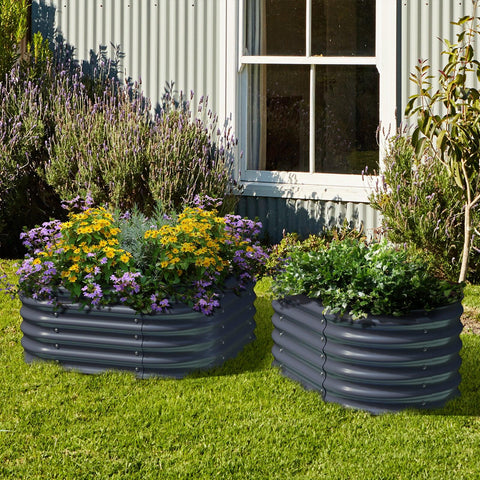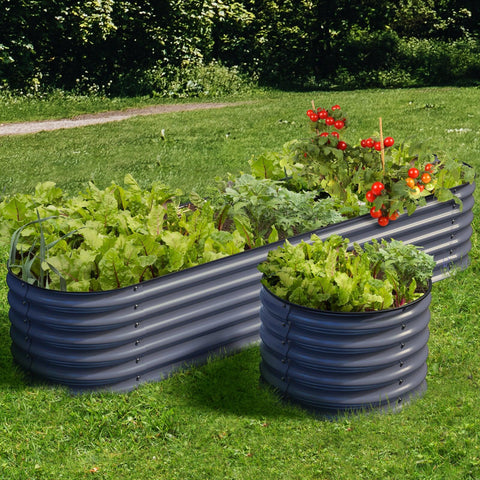Tips from Olle Garden Bed: Time to Plan Your December Gardening to-do List
It was the end of another glorious year of gardening. No matter what area you're in, now is the time to evaluate your garden and consider any changes you might make next year. What do you like about your garden? What do you dislike so much? Ideally, photos and a written record of your accomplishments and "failures" will help guide you toward a more productive 2022. The following content also has some reference value for raised garden beds.
All districts need to conduct a review of growth, damage, and sustainability, but each region has specific tasks that should be on your December gardening to-do list. No matter where your green space is, the implementation of deer fences will meet and exceed the requirements of your garden and landscape issues. It will keep wild animals large and small away from the area, giving your plants and soil a head start in the coming year.

You need to protect your garden and open areas from pests and other pests. They reproduce quickly and can easily destroy small and medium-sized plants and other vegetation. Having a fence means they won't be able to access your garden and fields. This is an aspect that many landowners tend to forget.
Northeast
1. Winter in the northeast comes quickly, so once December comes; Get ready to knock on the hatch.
2. Scan shrubs and trees for bark damage. If found, take action to eliminate deer, rabbits, or voles that may be present in your area.
3. Collect gardening tools and keep them neatly and safely in a shed or house. Remember that it should be clean, oiled, rust-free, and properly sharpened before storage.
4. Spray evergreen leaves with anti-desiccant to limit dehydration.
If you're not proactive at the beginning, bad weather conditions won't allow you to take extra precautions later.
Midwest
The Midwest of the United States faces plenty of cold temperatures, ice, and wind. Maintaining proper inspection and maintenance of outdoor areas is your top priority.
1. Repair any damage to the windproof fence. This could be an ongoing effort throughout the winter.
2. Remove snow from the path leading to the garden to be able to better remove fallen branches and further inspect the leaves.
3. Check shrubs and trees for damage. Consider installing deer fences to protect against rabbits and deer.
A proper knowledge of rodents and other pests in the area should give you an idea of the precautions you need to take. As food sources dry up during the winter, pests try to attack barns and other food storage facilities in and around the farm.
Pacific Coast
In the north, the rainy season has already begun. In the south, moisture can be very limited.
North Pacific coastline:
1. Now is the time to fertilize the shrubs that bloom in winter.
2. In case of dampness, check all leaves for snails.
3. Apply row caps to plants to protect them from unexpected cold snaps.

South Pacific coastline:
1. It's time to grow cold-season vegetables like kale, peas, cabbage, and broccoli.
2. Prune ornamental grass to promote new growth.
3. Stop pruning the rose bushes.
This is when many farmers need to start studying their landscapes and crops. It also means ensuring that your fields and gardens are protected at all times. Any problems in this area can be detrimental to your garden and fields.
Pacific Northwest
While the weather can be wet, temperatures in the Pacific Northwest are generally comfortable in December.
1. Plant any new shrubs and trees.
2. Insert the spring ball into the ground.
3. Pluck out the weeds left in the garden. Weeds will be easier to pull out as the soil may be moist, however, be careful not to step on moist soil as it will harden, which can cause problems in the spring.
Southwest
The Southwest is known for the unpredictability of December, so it's best to be prepared for anything.
1. In low-desert areas, grow cool-season vegetables such as peas, Swiss chard, cabbage and broccoli.
2. Cut back to the ground after the asparagus dies.
3. Use row covers to protect your tender plants.
Florida
Florida is a large state and the climate is different in December. South Florida tends to stay the same — hot and humid — while other parts of Florida can experience random cold snaps, so be prepared for where you live.
1. Plant plants with cooler weather, such as peas, lettuce, and spinach.
2. Cover more tender plants with row covers during cold snaps.
3. Stop fertilizing plants as it can cause damage in cold weather.
Southeast
December is usually the season for cooler temperatures in the southeast, which tends to be a welcome relief.
1. Plant shrubs and trees; Add compost to your garden.
2. When the temperature drops, cover the tender plants with row covers.
3. Plant spring flowering bulbs.

Mid-Atlantic
Due to its proximity to the ocean, December in the mid-Atlantic region is generally milder.
1. Apply mulch in your garden to protect from the harshest cold that is coming.
2. Sheltered shrubs that need protection from heavy snow and ice.
3. Water shrubs and newly planted trees until the ground freezes.
No matter which area you call home, be sure to check any corn, tubers, or bulbs you store to see if they rot or dry out. Order any seeds you want to plant in the spring and enjoy the cool, mild temperatures offered in December.
Whether you have gardening as a personal hobby or have a professional tendency, you need to make sure to pay attention to the points mentioned in the article. Installing fencing, educating and informing you about gardening issues is essential to maintaining and maintaining a healthy garden.
